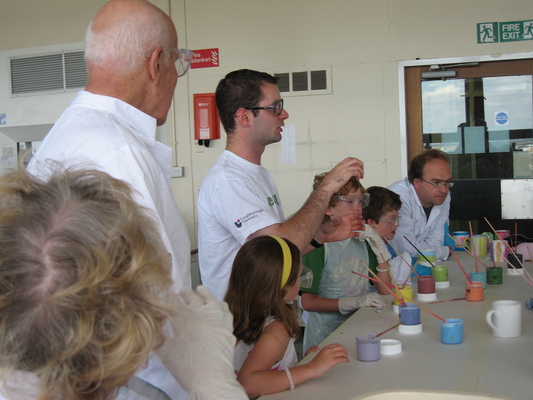Worksheets

Below are links to worksheets for the seven main experiments we carry out during our 'Creating a Colourful Life' events. Each worksheet is viewable as a PDF file. During our events, demonstrators are available to communicate a wide variety of background information and to answer scientific and general questions. The demonstrators also take participants through the experiments step by step and provide safety information where appropriate.
If you would like teacher resources please visit our resources section.
- Photochromic (light sensitive) and Thermochromic (heat sensitive) Pottery Painting - paint pottery with paints which change colour when you heat them, glow when placed in the dark or glow under ultra violet light. You can paint mugs, photo frames, cat banks, piggy banks, heart banks and doggy banks.
- Make your own Pigments - make your own brightly coloured pigments using the same apparatus we use in the laboratory. Learn about titrations, solubility, filtration and chemical reactions as you make your own pigments. Then use your pigment to make a paint.
- Make your own Paints - make your own paints from eggs and pigments. You can use pigments from around the world, or modern synthetic pigments made by scientists. During this experiment you can also use modern lustre and pearlescent paints. Once you have made your paints you can create your own picture or paint on a gigantic mural.
- Crime Scene Investigation - solve the crime of the stolen CD player. Using pigment science you can separate inks to discover who wrote the ransom note letter.
- Security Pigments - pigments are used for security markings to prevent fraud of banknotes, passports and drivers licenses. Use ultra violet light to see the security pigments, and look at money from all over the world.
- Invisible Inks - send secret messages to your friends using materials available in the kitchen. Your demonstrator will show you how to create your message, and also how to reveal it when it needs to be read.
- Food Dye - food dyes are mixtures of colours. Learn how to separate out these colours, and then apply your knowledge to work out which e-numbers appear in which food dyes.






